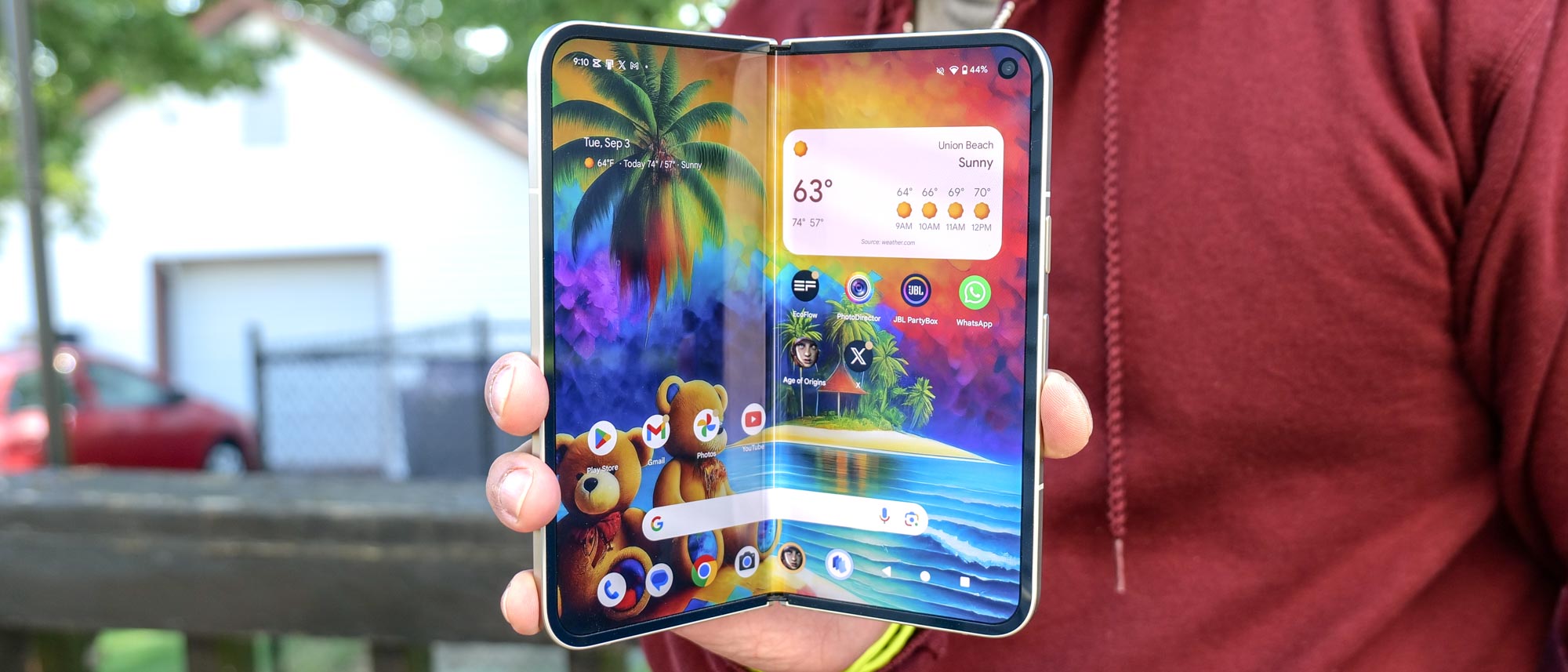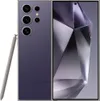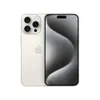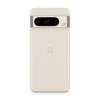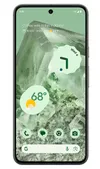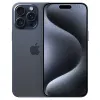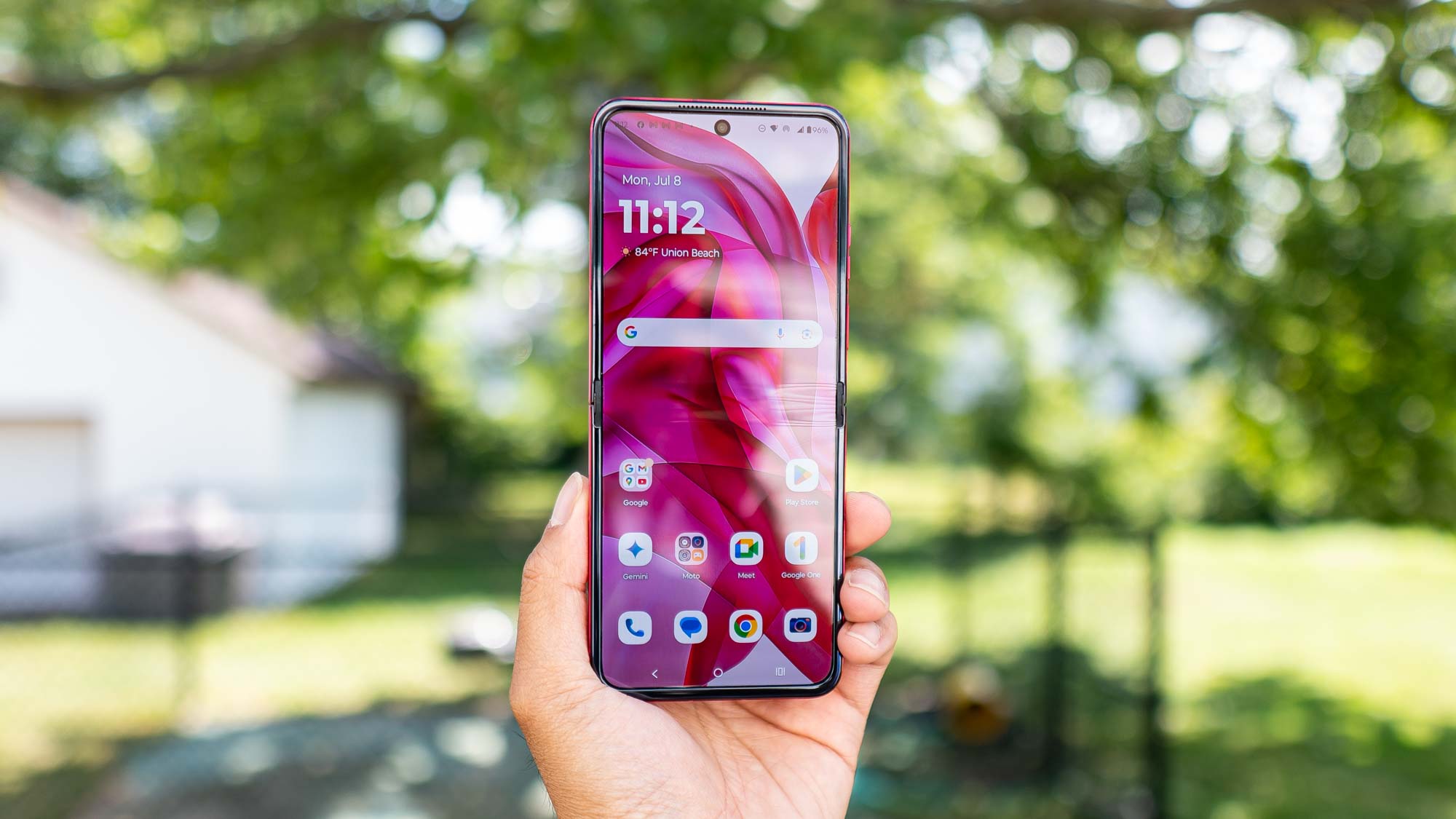Tom's Guide Verdict
The Pixel 9 Pro Fold is a strong follow up to Google's first foldable phone with a huge 8-inch display, slim design and longer battery life. But the weaker software and camera improvements make it a tough sell at $1,799, especially when compared to rival devices like the OnePlus Open.
Pros
- +
Bigger, brighter 8-inch main display
- +
More durable redesign
- +
Smarter AI features
- +
Longer battery life than before
Cons
- -
Underwhelming Tensor G4 performance
- -
Minor camera quality improvements
- -
Charges slower than first Pixel Fold
Why you can trust Tom's Guide
Google’s first stab at a foldable phone with the Pixel Fold wasn’t quite a home run, but it at least gave consumers another option besides Samsung's foldables. With the Pixel Fold successor, however, there’s a lot more pressure because the new Pixel 9 Pro Fold competes against break out devices like the OnePlus Open — as well as the recently released Galaxy Z Fold 6.
Using this opportunity to improve upon the shortcomings of last year’s Pixel Fold, Google has given its newest notebook-style foldable phone an extreme makeover, as well as a name change to better align with the other Pixel 9 phones in its lineup. You get the largest display yet in a foldable at 8 inches (at least in the U.S.), a brighter screen and numerous camera upgrades. Google’s also banking on new AI features to hopefully propel the Pixel 9 Pro Fold over its foldable rivals.
In my Pixel 9 Pro Fold review, I’ll tell you if all the new changes are enough to give this device that prestigious title of best foldable phone. Now that the novelty of foldables has dissipated, it’s going to take the Pixel 9 Pro Fold a whole lot more than just flexing to convince people it’s worth the money.
Google Pixel 9 Pro Fold review: Specifications
| Row 0 - Cell 0 | Row 0 - Cell 1 |
| Price | from $1,799 / £1,749 / AU$2,699 |
| Chip | Tensor G4 |
| RAM | 16GB |
| Storage | 256GB, 512GB |
| Main display | 8 inches OLED (2076 x 2152, 1-120Hz) |
| Cover display | 6.3 inches OLED (1080 x 2424, 60-120Hz) |
| Rear cameras | 48MP main (f/1.7), 10.5MP ultrawide (f/2.2, 87° FoV), 10.8MP telephoto f/3.1 with 5x optical zoom |
| Front camera | 10MP f/2.2) |
| Inner camera | 10MP (f/2.2) |
| Video | 4K up to 60 fps |
| Battery | 4,650 mah |
| Charging | 21W |
| Colors | Obsidian, Porcelain |
| Size folded | 6.1 x 3.0 x 0.4 inches (155.2 x 77.1 10.5mm) |
| Size unfolded | 6.1 x 5.9 x 0.2 inches (155.2 x 150.2 x 5.1mm) |
| Weight | 9.1 ounces (257 grams) |
Google Pixel 9 Pro Fold review: Price and release
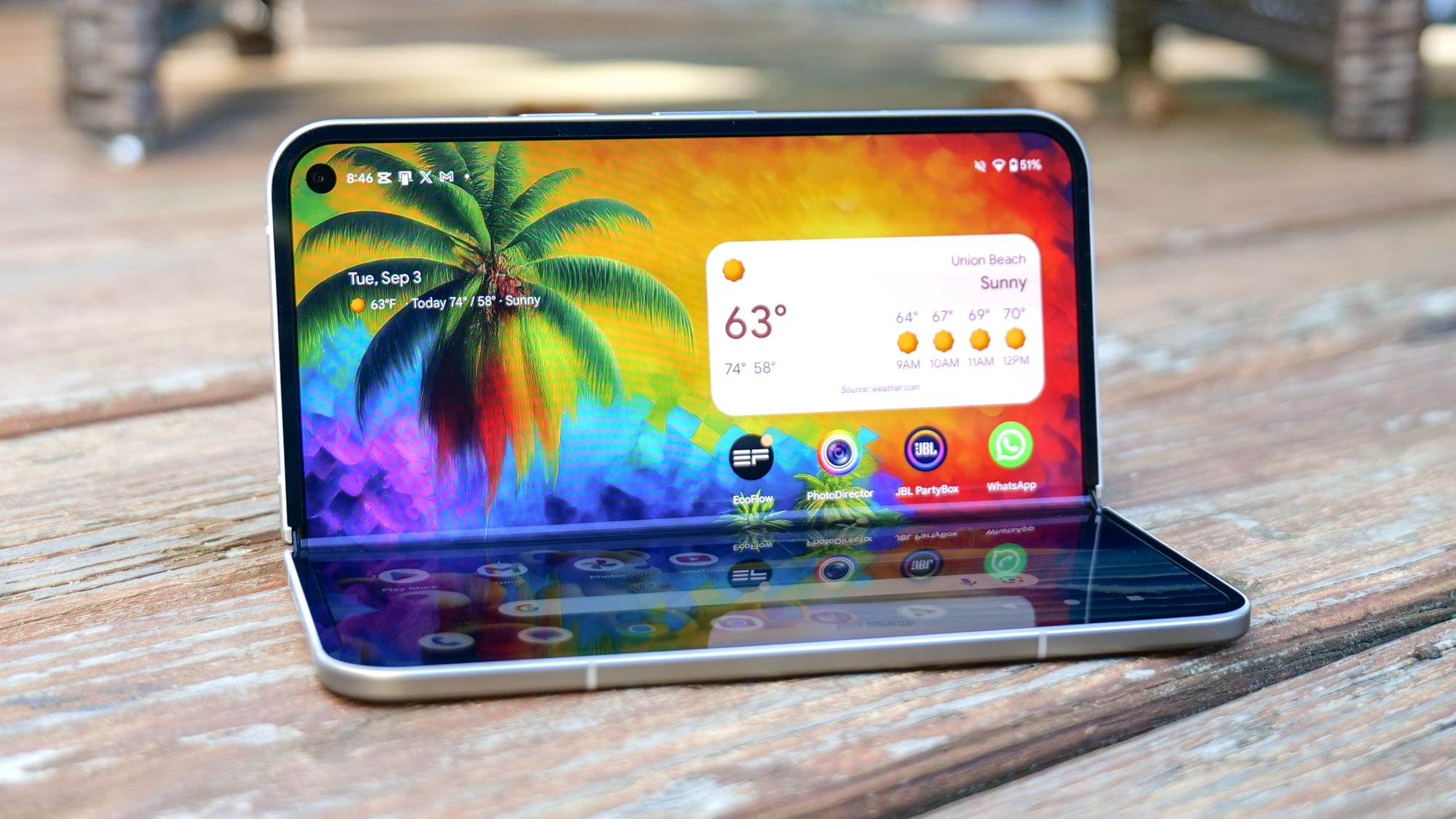
Pixel 9 Pro Fold preorders are available right now and it will go on sale starting on September 4 in just two plain colors: Obsidian and Porcelain. I wish that Google offered at least a third color option, just to give people something else to consider even if there are several, brightly colored Pixel 9 Pro Fold cases available for this device.
I also think it’s a tough position with the Pixel 9 Pro Fold's base starting price of $1,799 / £1,749 / AU$2,699 with 256GB of storage. While that’s easier to swallow than the outrageous $1,899 cost of the Galaxy Z Fold 6 in the US, it’s nowhere close to the OnePlus Open’s lower cost of $1,699 — which is made better with sales and trade-in offers that get the price down to as low as $1,399. It’s also worth noting that the OnePlus Open comes with a whopping 512GB of storage with the base model, making it tougher to justify the Pixel 9 Pro Fold’s value.
Google Pixel 9 Pro Fold review: Design
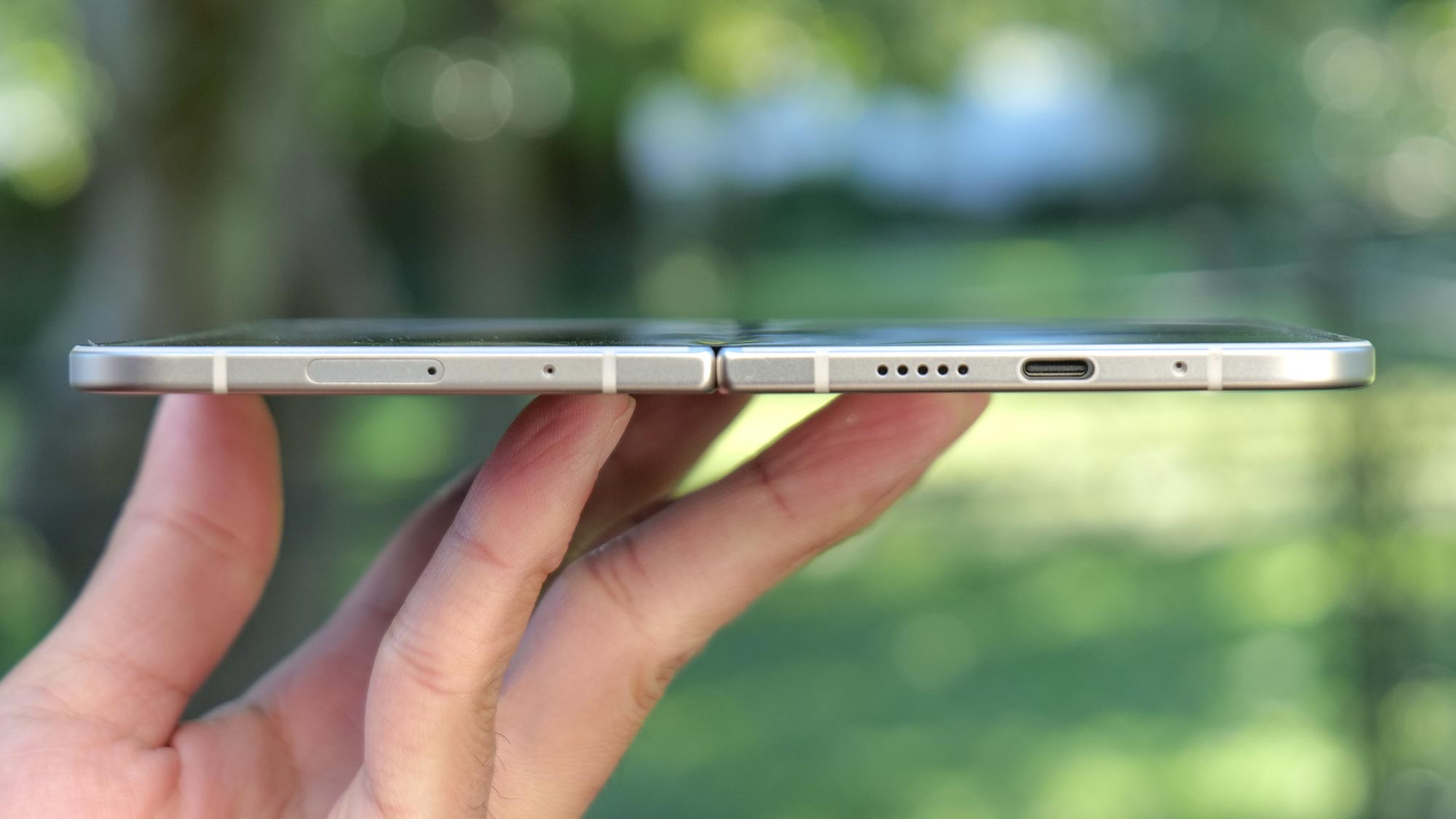
Almost instantly the moment I first saw it, I thought to myself that this should’ve been the original design for the Pixel Fold. I’m struck by the improvements, specifically by the new aspect ratio, sturdier hinge design, subtle crease, and the smaller bezels around the main display. There’s also the new camera arrangement on the back, which ditches the horizontal bar in favor of a rectangular cutout.
Even more impressive is just the overall solid construction of the Pixel 9 Pro Fold, which was one of the criticisms I had about the original Pixel Fold. It didn’t feel as polished, so I’m ecstatic that it feels much more substantial. It’s also one of the skinniest and lightest foldables around at just 0.2-inches unfolded and 0.4-inches folded, while tipping the scales at a modest 9.1 ounces.
Everything about the design of the Pixel Fold 9 Pro is fantastic, including its IPX8 rating, but it’s still shy of matching the stylish looks and incredible construction of the OnePlus Open.
Google Pixel 9 Pro Fold review: Display

Just when I thought we couldn’t get any bigger screens in foldables, the Pixel 9 Pro Fold does exactly that by exceeding the screens found in rivals like the Z Fold 6 and OnePlus Open with the 8-inch 2076 x 2152 Super Actua Display that serves as its main panel. The OLED-based screen looks stunning, crisp, and detailed — like it should for its price.
I much prefer its size this time around thanks mainly to how the Pixel 9 Pro Fold's outer 6.3-inch Actua Display sports a 20:9 aspect ratio, which makes the inner screen more square when unfolded. Due to this, apps fit better when they’re running side-by-side on the inner screen.
| Row 0 - Cell 0 | Google Pixel 9 Pro Fold | Samsung Galaxy Z Fold 6 | Google Pixel Fold |
| Inner Display size | 8 inches | 7.6 inches | 7.6 inches |
| Brightness (nits) | 2,319 | 2,317 | 900 |
| sRGB color spectrum | 119.4 (Adaptive), 106.6 (Natural) | 139 (Vivid) / 119 (Natural) | 124.8 (Adaptive) / 109.5 (Natural) |
| DCI-P3 color spectrum | 125.9% (Adaptive), 111.4% (Natural) | 136.4% (Vivid) / 114.7% (Natural) | 88.4% (Adaptive) / 77.6% (Natural) |
| Delta-e rating | 0.33 (Adaptive), 0.19 (Natural) | 0.24 (Vivid) / 0.24 (Natural) | 0.05 (Adaptive), 0.05 (Natural) |
But what’s most compelling about the new display is that it’s leaps and bounds brighter than its predecessor. In our benchmark testing, the 8-inch Super Actua Display hits a peak brightness of 2,319 nits — more than double the Pixel Fold’s brightness, which is an impressive improvement. Sure, it doesn’t quite reach Google’s claim of 2,700 nits, but it’s close. As a result, I’m able to see the screen much more easily on a sunny day than any other notebook style foldable out there.
Honestly, it’s a visual treat to the eyes whenever I play a 4K HDR clip on YouTube because it’s accompanied by rich colors and wide viewing angles. There’s simply no other foldable with a brighter screen than the Pixel 9 Pro Fold, and for that I need to give Google credit here because it’s very rare that our testing gets close to a phone maker’s rating.
Google Pixel 9 Pro Fold review: Cameras
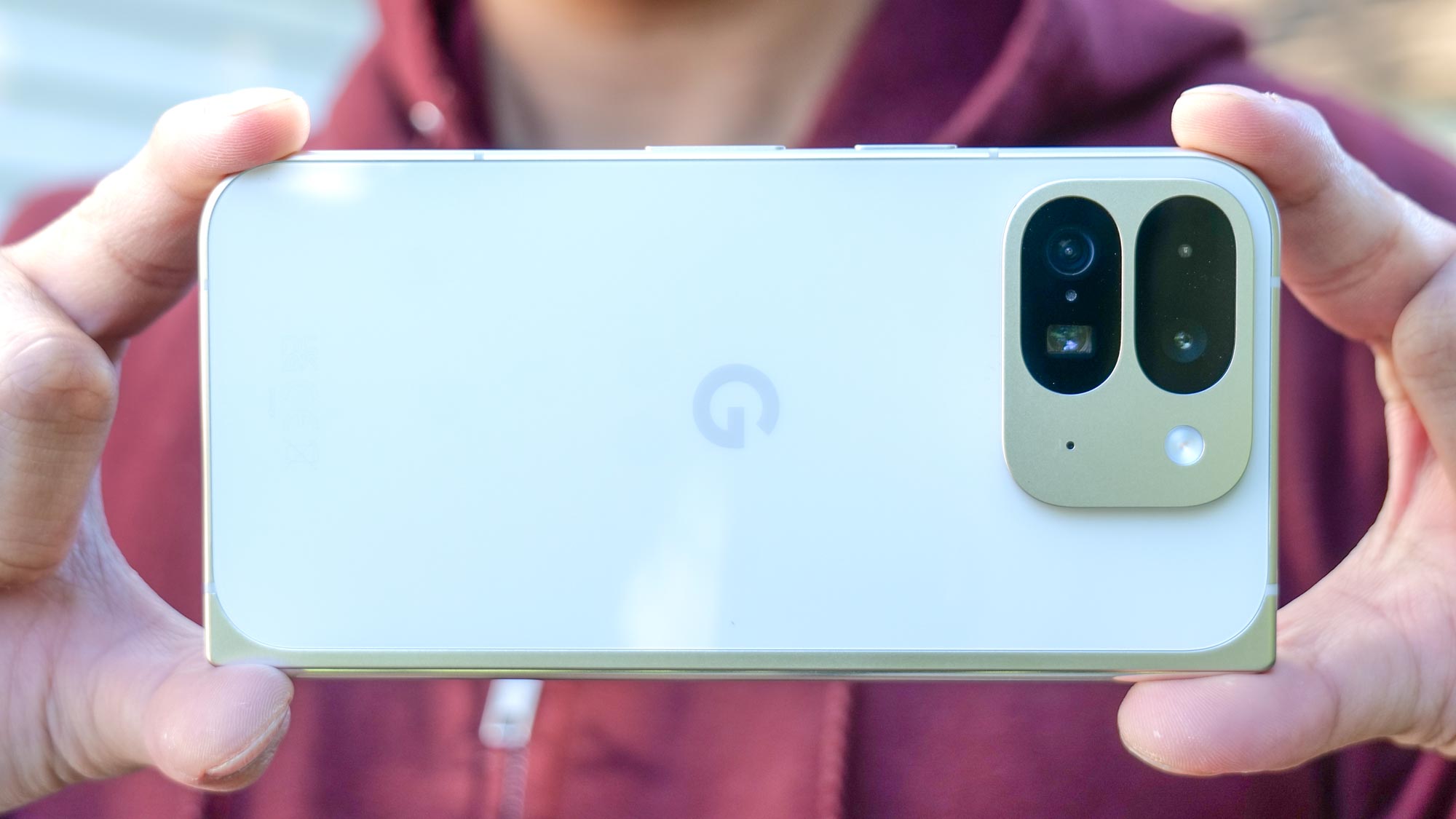
For a foldable phone, Google doesn’t skimp out on the cameras with the Pixel 9 Pro Fold. On paper, the specs seem all too familiar — a 48MP main camera, 10.5MP ultrawide, 10.8MP telephoto with 5x optical zoom, and a 10MP selfie shooter. However, there are some minor differences related to their apertures and field of views that benefit the Pixel 9 Pro Fold.
In addition to a robust camera system, I really enjoy the Pixel camera app because of the shooting modes it offers. New this year is the introduction of the Made You Look feature, which displays these animated cartoons on the cover screen to attract the attention of kids and keep them looking at the camera long enough to get a decent shot. I tried it on my young nieces and nephew with great effect.
Other camera features new this year include a revamped panorama mode (that also works with Night Sight) and the Add Me feature that uses augmented reality and AI that allows the photographer taking the photo to be part of the photo later on. I’ve tested this as well and the guidance it tells me with the help of AR ensures the photo’s framed perfectly.
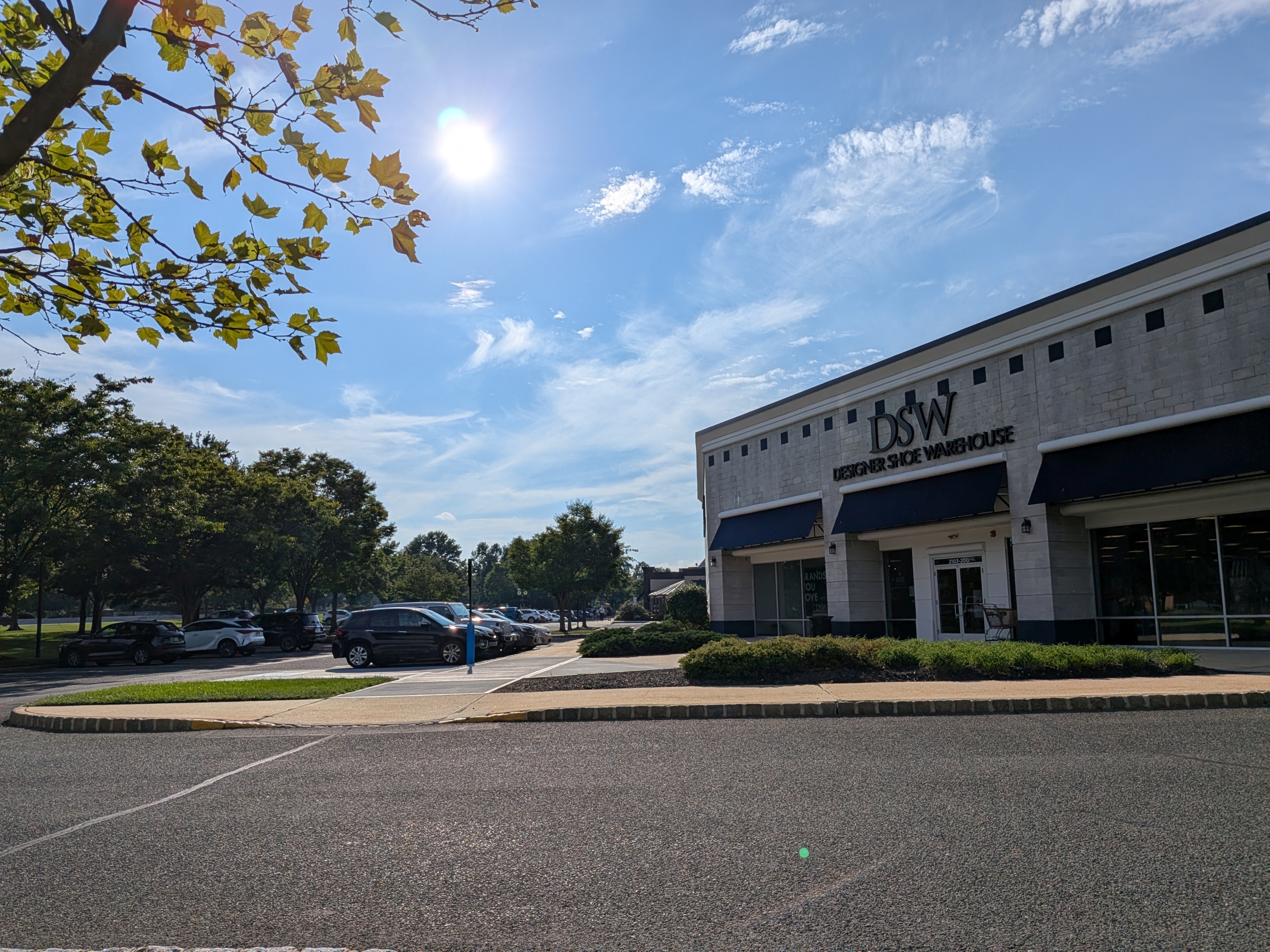
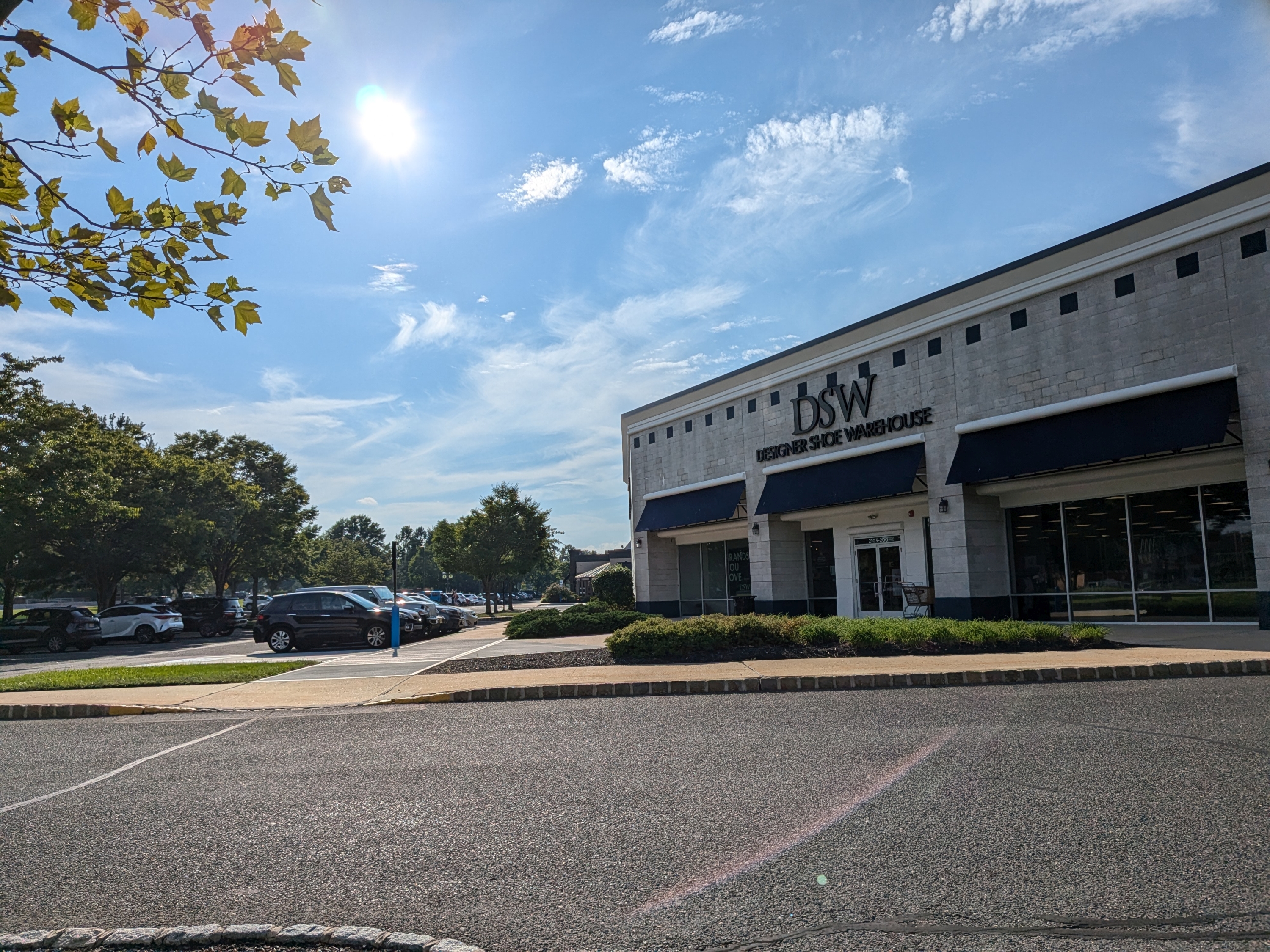
For your everyday shots taken in the daytime, the Pixel 9 Pro Fold’s main camera gets the job done — although I don’t see a big improvement from the Pixel Fold. The photo above illustrates this as the dynamic range performance looks identical with the shadowed parts of the DSW building, the bright sky, and the textures of the brickwork around the store. Unless I pixel peep, the only improvement I see is how there’s less noise in the shadows with the Pixel 9 Pro Fold.

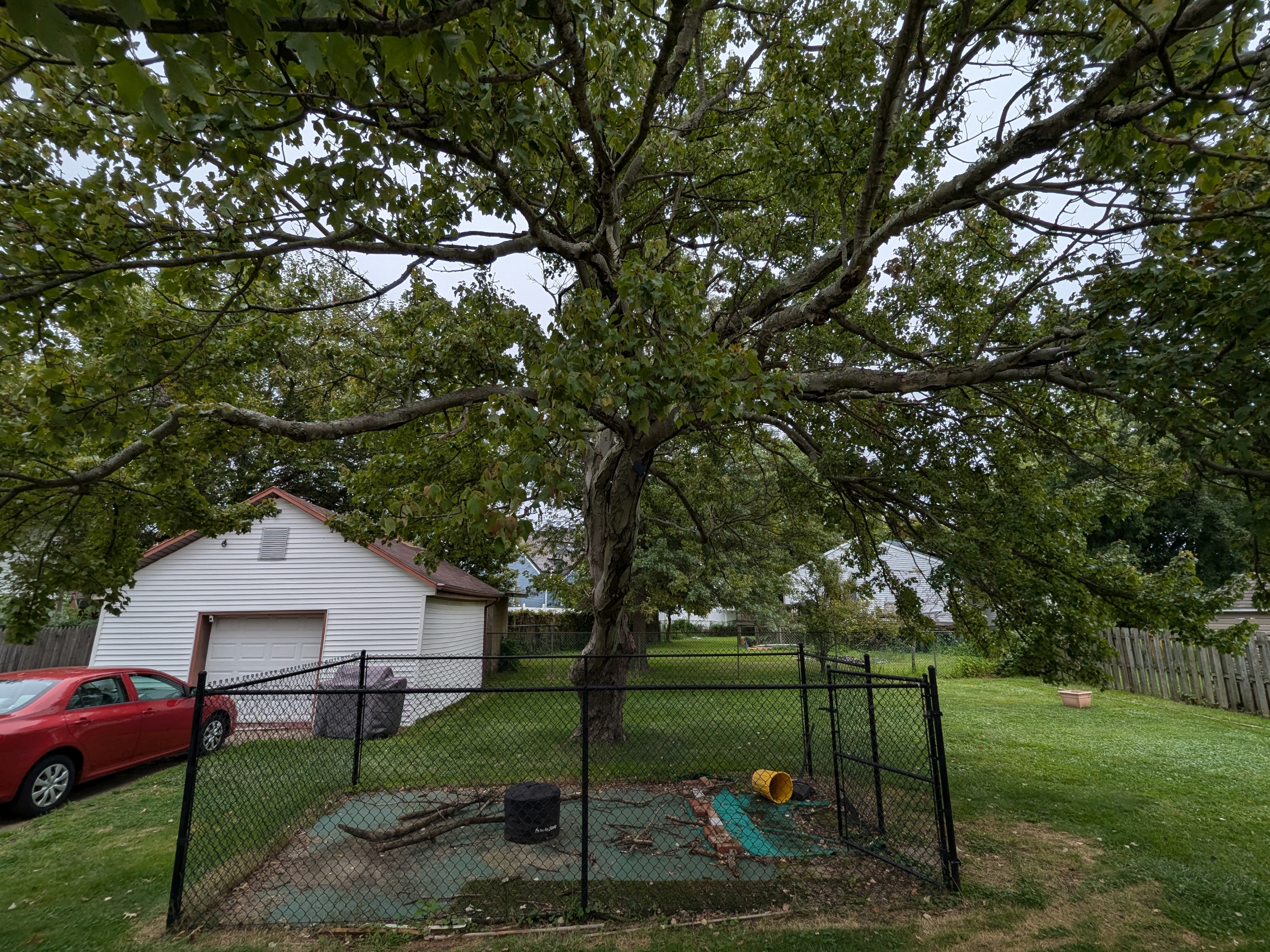
The 10.5MP ultrawide camera offers a wider 127-degree field of view (versus the 121-degrees of the Pixel Fold), so it’s able to capture more of the scene — making it better for group photos. Not only do you see more of my backyard in the shot above, but the Pixel 9 Pro Fold’s ultrawide brightens up the shot better to expose the details in the tree’s branches.


Another win for the Pixel 9 Pro Fold is how much more suitable it is for capturing selfies with its 10MP front-facing camera. Not only is the quality vastly better than the inner screen selfie camera, but it’s slightly wider with an 87-degree field of view. That’s the only meaningful upgrade because it captures the same amount of detail around my face and in the shirt I’m wearing in the selfie above.


I'm still on the fence about how Google changes the way panoramas are shot with the Pixel 9 Pro Fold, but I can’t complain too much because the end result is much better than the Pixel Fold. That’s because not only does it capture more details of the tree in my backyard in the photos above, but it also evens out the exposure throughout the scene — whereas the Pixel Fold looks too overexposed.
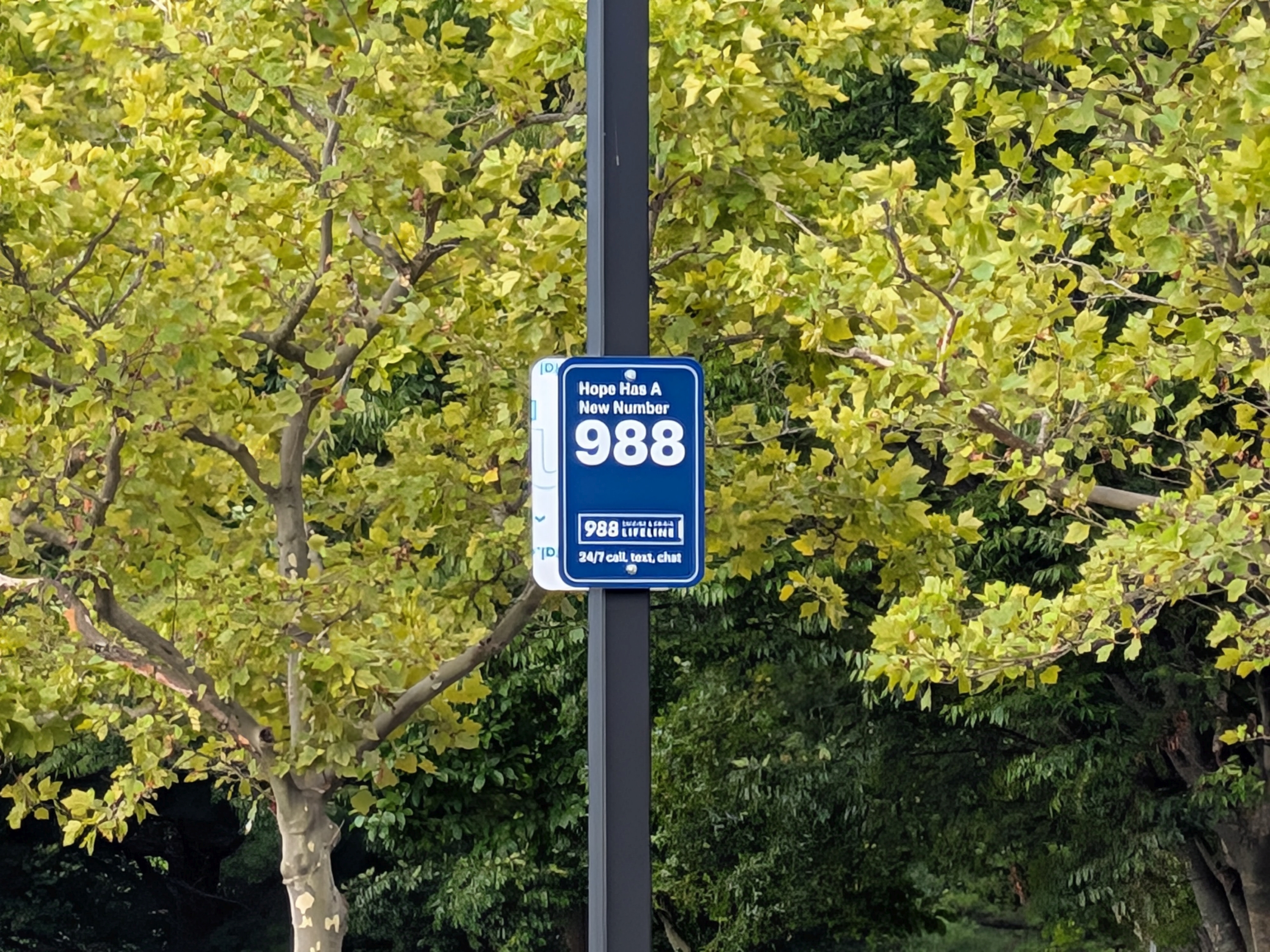
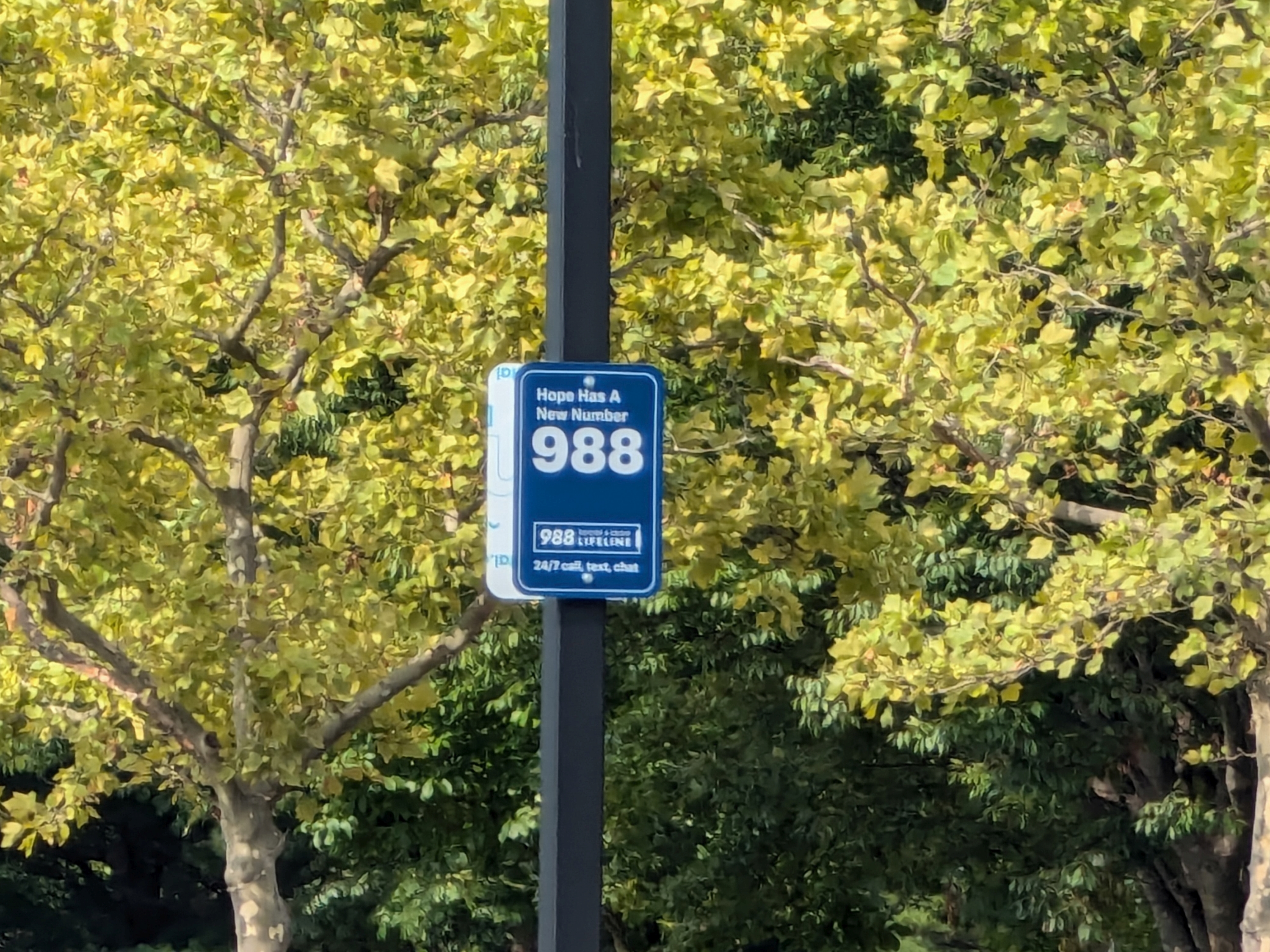
In the zoom department, I hardly notice anything different at 5x zoom, but there's clearly something going on at 20x zoom. Whatever new image processing algorithms it's using, the Pixel 9 Pro Fold sharpens the image, whereas the Pixel Fold has some softer qualities about the sign above.


Low light doesn’t see any major gains for the Pixel 9 Pro Fold, which is a shame because this is the way newer phones manage to convince people they have better cameras. It suffers from the same distorted colors I see with the Pixel Fold under pitch black conditions, which you can see from the shot of my backyard. The tree in the middle is still smeary, but not as smeary.
This is the one area where Google could’ve taken the lead on, especially coming after the Galaxy Z Fold 6. Compared to the OnePlus Open, it’s nearly a deadlock with most of the photos I’ve taken — but a slightly better performance in the zoom department. But I’m disappointed that there aren’t bigger gains overall, which means that existing Pixel Fold owners shouldn’t drop the foldable for this one if cameras are important to them.
Video recording tops out at 4K 60 fps, the same as before. Unlike the other Pixel 9 Pro devices, the Pixel 9 Pro Fold doesn’t make the leap to 8K recording. Despite that, I can clearly make out how it captures sharper details than the Pixel Fold with the sand in the foreground of the video above, as well as how it stabilizes the footage to reduce shakes while I’m panning.
Google Pixel 9 Pro Fold review: Performance
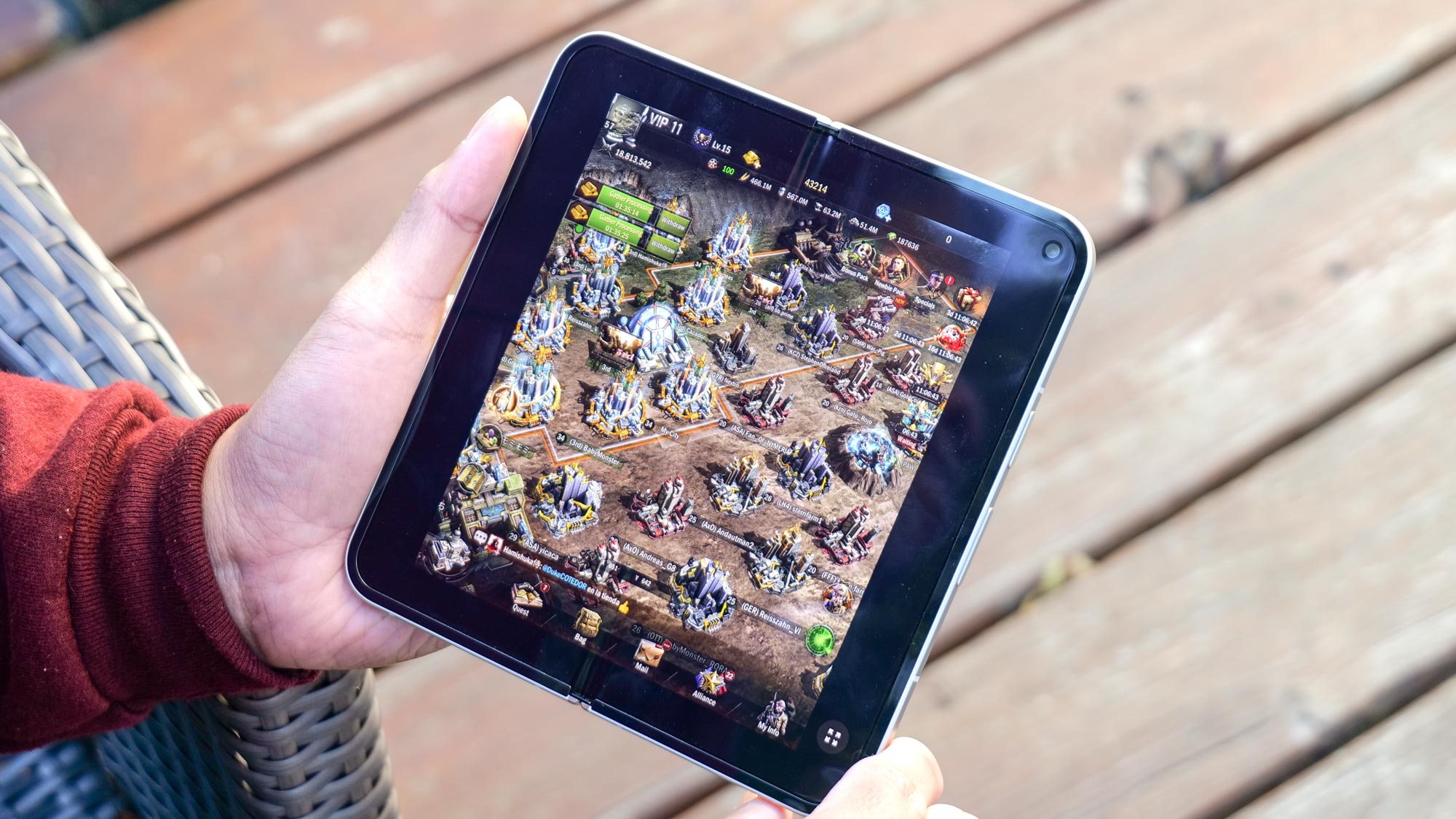
Last year’s Pixel Fold was in a predicament because it launched before the Pixel 8 lineup, which kept it stuck with an older Tensor G2 processor. This time, though, the Pixel 9 Pro Fold is powered by the newer Tensor G4 chip and paired with 16GB of RAM. Not surprisingly, these two upgrades give it a marked improvement in just about every synthetic benchmark test we threw at it.
Both its single and multicore scores in Geekbench 6 are substantially better at 1,956 and 4,813 respectively. It finished way ahead against the Pixel Fold, but the Tensor G4’s still way behind the scores put up by the Z Fold 6’s Snapdragon 8 Gen 3 chip. But I think most people wouldn’t realize that with all the superficial stuff, like navigating around the interface and juggling a few apps at once — since it still delivers the same instant responses and fluid actions that I love seeing in high-end phones.
| Pixel 9 Pro Fold | Galaxy Z Fold 6 | Pixel Fold | |
| CPU | Tensor G4 | Snapdragon 8 Gen 3 | Tensor G2 |
| Geekbench 5 (single core/multicore) | 1,956 / 4,813 | 2,172 / 6,901 | 1,387 / 3,849 |
| 3DMark Wild Life Unlimited (fps) | 55.72 | 112.71 | 40.47 |
| Adobe Premiere Rush (Mins:Secs) | N/A | 0:40 | 1:00 |
When it comes to graphics processing, the Pixel 9 Pro Fold’s still nowhere as smooth as the Galaxy Z Fold 6 with 3DMark’s Wild Life Unlimited test. The 55.72 fps rate it averages in the test pales in comparison to the smoother 112 fps rate of the Z Fold 6, while also coming up short to the OnePlus Open’s average of 84.8 fps. Luckily for me and the games I play religiously, I don’t see any major hitches to the gameplay in Age of Origins — even when there’s intense action happening on screen.
Google’s silicon has yet to eclipse what Qualcomm and Apple has shown us, but I’m not bummed by this because quite frankly, the Pixel 9 Pro Fold feels and performs like a champ with the things I do on the daily. Side-by-side apps multitasking is no problem here as I’m able to effortlessly watch a YouTube clip while scrolling through Instagram, or jotting down an email reply in Gmail while playing Age of Origins on the other.
Google Pixel 9 Pro Fold review: Battery

Usually whenever a phone ends up getting a smaller battery than its predecessor, it’s because of it trying to be thinner and lighter. Of course that’s the case here with the Pixel 9 Pro Fold’s 4,650 mAh battery, which is smaller than the 4,822 mAh battery of the Pixel Fold. Lucky for the Pixel 9 Pro Fold, the Tensor G4 appears to be much more power efficient.
| Pixel 9 Pro Fold | Galaxy Z Fold 6 | Pixel Fold | |
| Battery size | 4,650 mAh | 4,400 mAh | 4,822 mAh |
| Battery life (Hrs:Mins) | 11:36 | 10:35 | 10:21 |
| Charging speed | 21W wired | 25W wired | 20W |
| Charge % after 30 minutes | 38% | 56% | 47% |
In our battery benchmark tests, the Pixel 9 Pro Fold manages to last 11 hours and 36 minutes in one pass of our test — which is more than an hour longer than what the Pixel Fold eked out. There’s no denying that it’s a win for Google here, but I was hoping for a longer lasting time because of how the Pixel 9 and 9 Pro XL both achieved significantly longer times than their predecessors. But to be fair, it actually lasts longer than the time posted by the Samsung Galaxy Z Fold 6 and just a smidge short of the OnePlus Open’s time.
The Pixel 9 Pro Fold features 21W wired charging through its USB-C port and in our testing yields 18% of battery with 15 minutes of charging, which then reaches 38% in 30 minutes. That’s actually short of the Pixel Fold’s reach of 23% and 47% with 15 and 30 minutes of charging respectively.
Google Pixel 9 Pro Fold review: Software
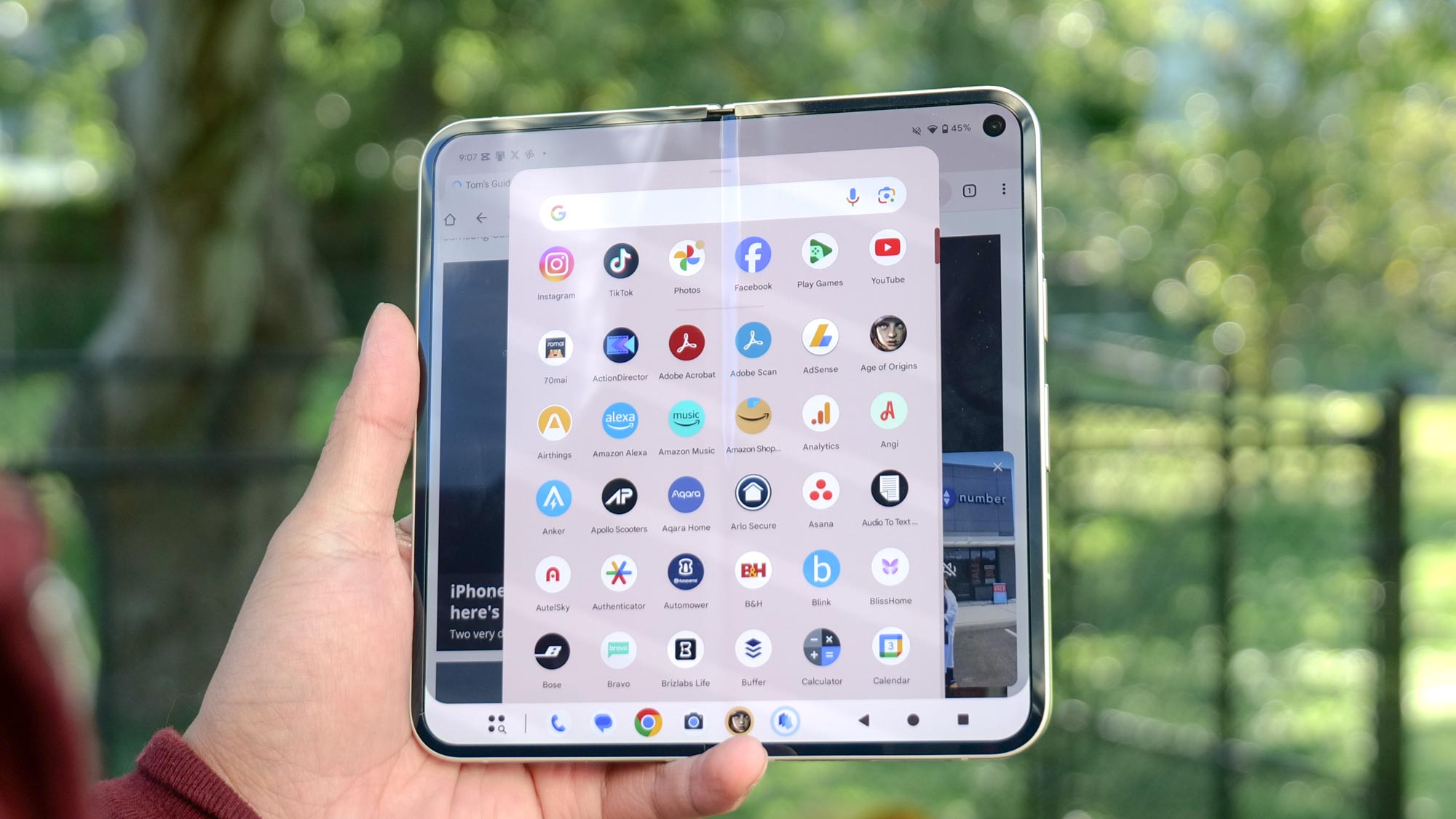
Apart from its foldable nature, there’s actually not a whole lot separating the software between the Pixel 9 Pro Fold and the other Pixel 9 devices. That’s a good thing because it shares the same set of new Pixel 9 Pro AI features that work really well and are intuitive to use. I won’t rehash them all here because I detailed all the AI features in my Pixel 9 Pro XL review — like how Add Me is helpful in capturing photos to include the photographer into the photo, Gemini Live’s more natural conversation skills, and the magical powers of Reimagine.

These AI features truly set it apart from other foldables, mainly because they're simple and intuitive to use. There's also more focus around generative AI and how it changes up the way I edit photos. For example, Pixel Studio lets me create custom images all through descriptions I provide in a text prompt. There's also the Reimagine feature that's part of Magic Editor, which realistically adds new elements to my photos by simply describing what I want. And finally, I love how the Call Notes makes it a breeze for me to remember what went on with phone calls because it transcribes and summarizes them for me.
Quite frankly, the AI features are what makes the Pixel 9 Pro Fold special among foldable phones. However, I'm curious if Google will ultimately roll out these new AI features to the Pixel Fold. Samsung did exactly this a few short months after the launch of its Galaxy S24 phones by brining its Galaxy AI features to the Galaxy S23.
What I’m actually surprised most about is by how little Google has done to improve the experience for being a foldable phone. On one hand, there’s still side-by-side apps multitasking that works nicely — including the ability to perform drop and drag actions, like attaching a photo from Google Photos to an email I’m writing in Gmail.
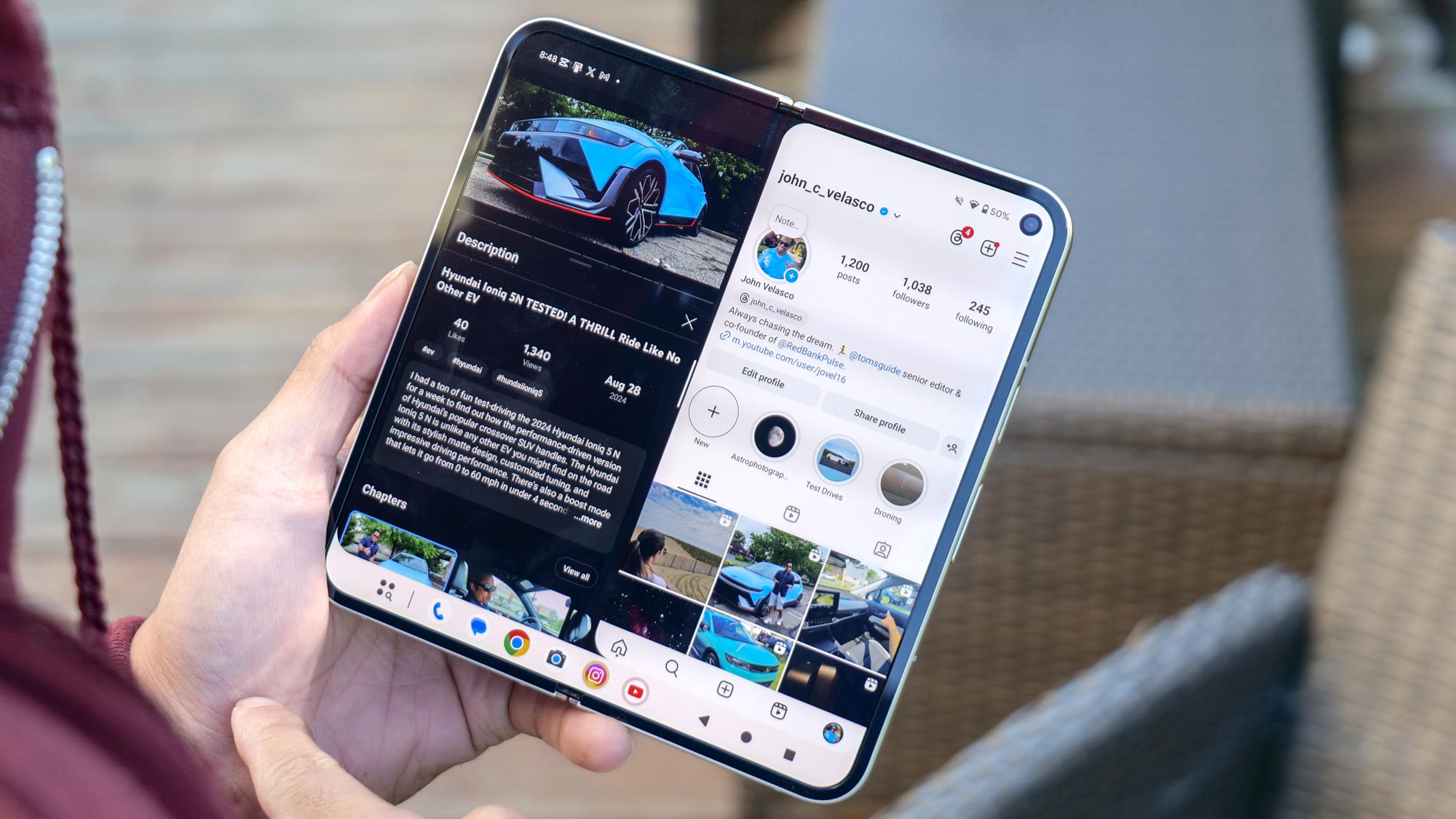
There are still anomalies with certain apps, especially when I start an app with the outer screen and then decide to use them with the inner screen — like how some games still need to be refreshed in order to work properly — but this isn’t just a Pixel 9 Pro Fold problem. There’s also no movement to how it multitasks with its main display, which is still done by bringing up the taskbar by swiping from the bottom edge of the screen.
Even though it’s helpful to have side-by-side apps, I wish it copied the Open Canvas feature that the OnePlus Open offers to dynamically arrange up to 3 apps simultaneously. Sure, not everyone will need to juggle three apps, but it’s handy for those situations. My problem with the Pixel 9 Pro Fold is that it’s unable to store multiple side-by-side apps in memory, which limits its productivity.
Furthermore, there’s also not much movement in leveraging tent mode to optimize apps when it’s folded halfway. Some of the native apps work in this mode, like YouTube and the camera app, but I’ve yet to come across any third party app that’s optimized for it. Again, it’s not just a Pixel 9 Pro Fold problem — it’s an Android thing.
Apart from that, the software doesn’t differ all that much from the Pixel 9 Pro and 9 Pro Fold. This includes a year’s worth of Gemini Live, the updated Video Boost Mode, Pro Controls with the camera, and even all the same AI features. The only exclusive feature is the Made You Look feature. It’s also launching with Android 14 instead of Android 15, but still gets the same 7 years of major software and security updates.
Google Pixel 9 Pro Fold review: Verdict
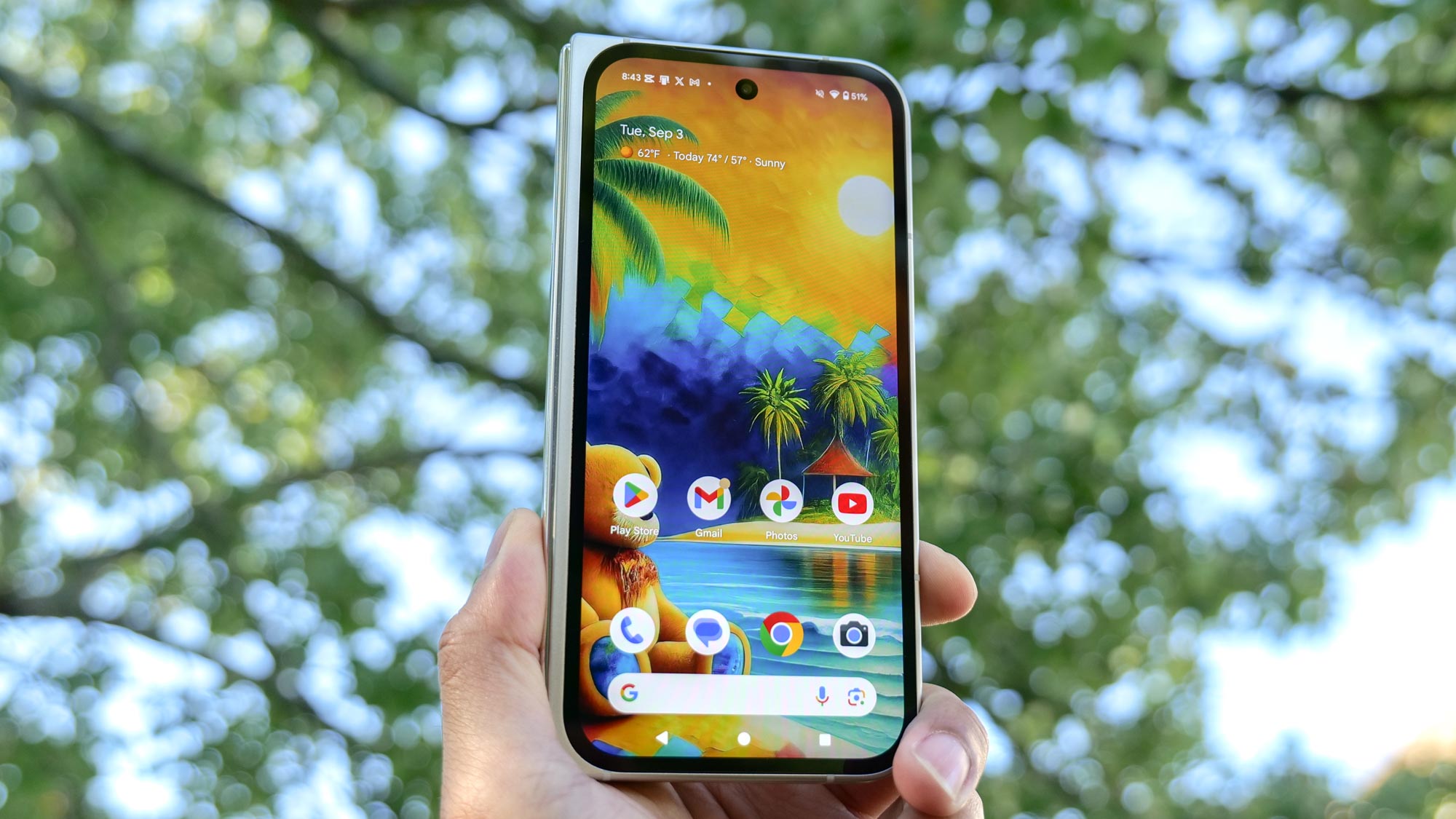
Seriously, this is exactly what the original Google Fold should’ve been from the start because the Pixel 9 Pro Fold is much more polished in every way. Its new redesign makes it look and feel like a more modern foldable, but I was expecting so much more to justify its $1,799 cost.
All of the new AI features certainly elevate its worth, but it would’ve been much more satisfying to see it getting more exclusive features — just to give it a bit of distinction over the slate Pixel 9 Pro models. I’m also disappointed that the camera upgrades are minimal at best and how the overall software experience doesn’t change all that much functionally.
Google addresses many of the shortcomings of the original, but the bar has been set higher by other foldables like the OnePlus Open and Samsung Galaxy Z Fold 6. Needless to say, it’s much better than its predecessor, but still comes up short of matching the value that its contemporaries offer.
More from Tom's Guide
- iPhone 16 could come with a brand new Capture button — but Apple should just steal this Android feature instead
- I have half a dozen USB-C chargers in my house — none of them charge the Pixel 9 Pro XL at full speed
- I've covered every iPhone launch — these are my 5 biggest questions about the iPhone 16

John’s a senior editor covering phones for Tom’s Guide. He’s no stranger in this area having covered mobile phones and gadgets since 2008 when he started his career. On top of his editor duties, he’s a seasoned videographer being in front and behind the camera producing YouTube videos. Previously, he held editor roles with PhoneArena, Android Authority, Digital Trends, and SPY. Outside of tech, he enjoys producing mini documentaries and fun social clips for small businesses, enjoying the beach life at the Jersey Shore, and recently becoming a first time homeowner.
